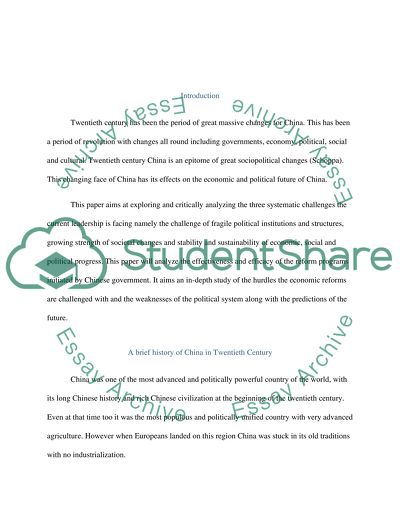Cite this document
(“China in the 20th century Essay Example | Topics and Well Written Essays - 2500 words”, n.d.)
Retrieved from https://studentshare.org/history/1413473-20th-century-china
Retrieved from https://studentshare.org/history/1413473-20th-century-china
(China in the 20th Century Essay Example | Topics and Well Written Essays - 2500 Words)
https://studentshare.org/history/1413473-20th-century-china.
https://studentshare.org/history/1413473-20th-century-china.
“China in the 20th Century Essay Example | Topics and Well Written Essays - 2500 Words”, n.d. https://studentshare.org/history/1413473-20th-century-china.


